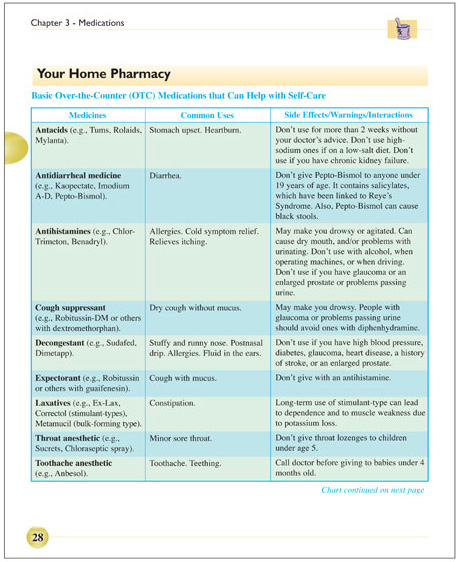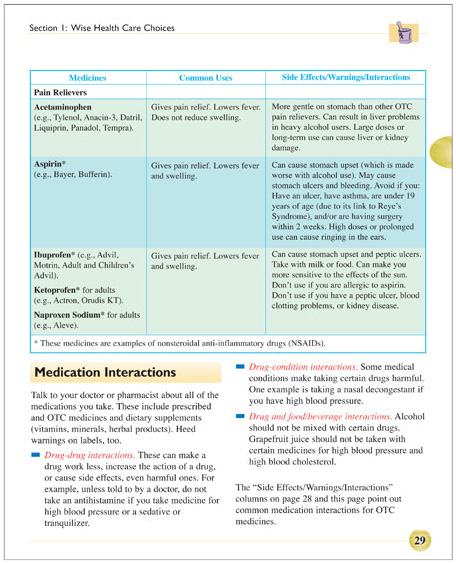


| Introduction | You & Your Provider | The 4 Rs | Being a Wise Consumer | Your Home Pharmacy | Review |
| Your Home Pharmacy |
|
The third goal of this workshop is to teach you to be ready for self-care when needed. Often, self-care/prevention tips require over-the-counter medications and/or supplies. There is a suggested list of these in Section I – Chapter 3 on pages 28, 29, and 30. I’d like to go over some of these with you now. It is important to keep items on hand so that they will be readily available when you need them.
Please check off the supplies you think you currently have at home and take a more complete inventory within the next three days. Be sure to store all supplies and medicines in a convenient dry place and always out of children’s reach. Also, check expiration dates periodically and discard and replace items as needed.
|
|
|
|
Your home pharmacy chart includes: Over-the-counter medicines; common uses for them; possible side effects; warnings; and interactions with other medicines, foods, etc. You may choose not to stock some of these items due to allergies or lack of need. Also, individual circumstances may require that you need items that are not listed.
Also, note that it is important to read the labels on all over-the-counter medicines. Even though they can be bought without a prescription, they can cause harm if not taken appropriately or when warnings are not heeded. One example that comes to mind is the association of aspirin with Reye’s Syndrome in children. You will see this in the “Side Effects / Warnings / Interactions” column next to aspirin under “Pain Relievers.” It is also a good idea to ask your doctor or health care provider which pain reliever(s), as well as, other OTC medicines are okay for you to take.
Common drug interactions to know about are listed on the top of page 30. Don’t hesitate to consult your pharmacist, doctor, or health care provider when you are unsure of what to do or what to take.
|